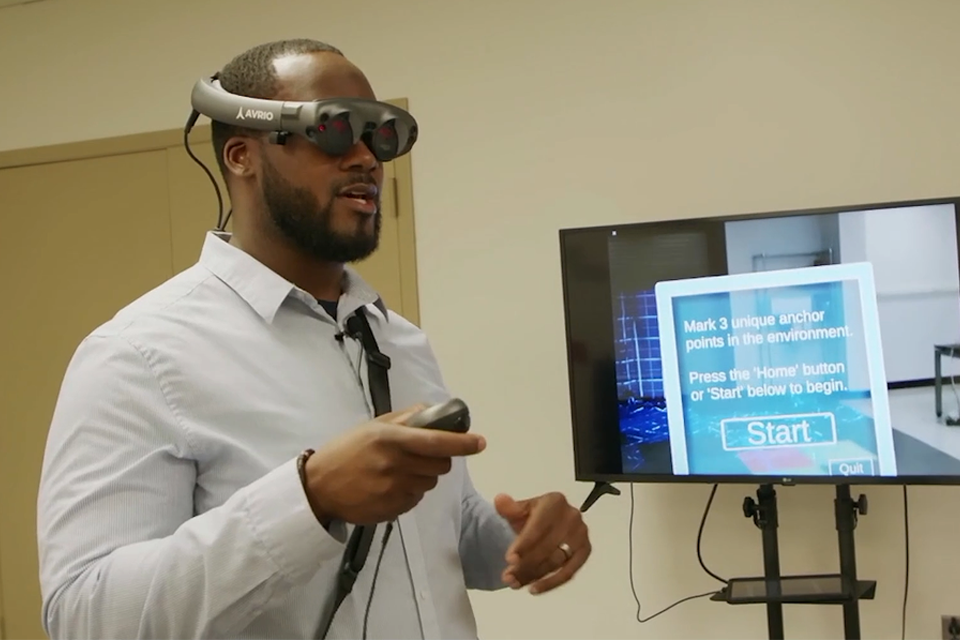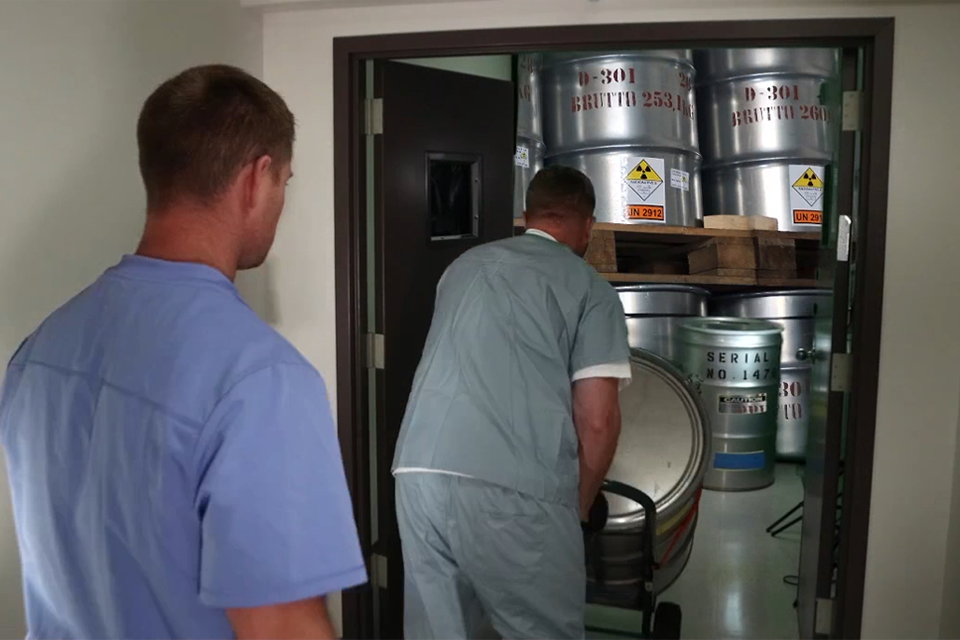
At the Global Security Analysis and Training Learning Lab, the use of different virtual or augmented headsets allow people to communicate with others across great distances for common objectives.
The Oak Ridge Enhanced Technology and Training Center (ORETTC) is under construction on the west end of the Oak Ridge Turnpike. It will be a state-of-the-art training complex that serves as the nation’s preeminent training facility for radiation response, nuclear processing, and emerging technologies. However, some of the ORETTC technology has been getting a trial run across town.
While ORETTC is being built, the training for radiological emergency responders has continued at Y-12. Relatively new to the mix is the Global Security Analysis and Training (GSAT) Learning Lab. The facility sits a short distance from the Y-12 site and its success is due in part to the challenges posed by COVID-19.
“We went from having all these face-to-face engagements to needing to do virtual engagements,” said Mary Lin, senior manager of Knowledge Acquisition and Performance Studies (KAPS).
She said technology became the solution.
Within the walls of the lab are instructional designers with expertise in video and technology. There is an attorney on staff for nuclear safeguards and policy instruction.
“Our augmented reality program came to life out of the COVID-19 pandemic. Our distance learning and virtual-learning-use green screen technology. All that came out of the pandemic,” said Lin.
Green screens allow participants to be placed into virtual locations that simulate real-life scenarios.
“One of the things that we do with green screens,” said Lin, “is play videos, similar to a news production, allowing a person to point out things in the video for better comprehension. We also use iPads that let them be John Madden, who was famous for diagramming football plays on monitors. It allows [instructors] to kind of circle the event in a video and say ‘look at what’s happening.’ So it creates that immersive learning experience.”
Participants are offered a full menu of training resources. “We do everything from international engagements to domestic training, where we offer everything from alarm response training to international nuclear material accountancy and control courses,” Lin said.
Toby Williams, who heads GSAT, said the courses being developed at the learning lab will benefit all its programs and create a better learning environment.
“Augmented reality training allows us to engage with participants in an immersive manner in both in-person training and distance training,” Williams said. “It makes the training and concepts more interactive, which means the participants are more likely to remember what we taught,” he added.
Being off-site also has the benefit of lowering the risk level GSAT potentially presents to the site.
“Security is a huge deal at the site and understandably so. Moving to ORETTC will reduce the level of risk we present to the site, allowing us to challenge new processes, ideas, and concepts. Specifically, within our international engagements, we will be more adaptable.” said Williams.
Ashley Stowe is the new director of ORETTC.
“The GSAT group provides nuclear and radiological response training to our customers. The learning lab is a place where we develop the technologies and the course materials to deliver to our customers,” said Stowe. “In the gaming universe, they use this type of technology on a regular basis.
The use of different virtual or augmented headsets allow people to communicate with others across great distances for common objectives. It’s the same for us, but these are just toys until we provide the educational component, which the KAPS team provides.”
Stowe said working with their customers and subject matter experts, they are creating real-life simulations with gaming attributes. Add the educational component, and participants receive an enhanced training experience.
Stowe, Williams, and Lin all said the center will promote and challenge critical thinking in high-consequence operations or emergency response events, and will create a more adaptable and efficient training curriculum.
ORETTC is located on an 81-acre campus in Roane County within the City of Oak Ridge. It will consist of two facilities, the Simulated Nuclear and Radiological Activities Facility and the Emergency Response Training Facility, and will serve as a graduate-level academy for first responders, nuclear security professionals, and nuclear nonproliferation experts.
Stowe said they intend to host their first ORETTC training class with outside participants in early December.

Activities such as radiological material moves can be simulated in the Global Security Analysis and Training Learning Lab.